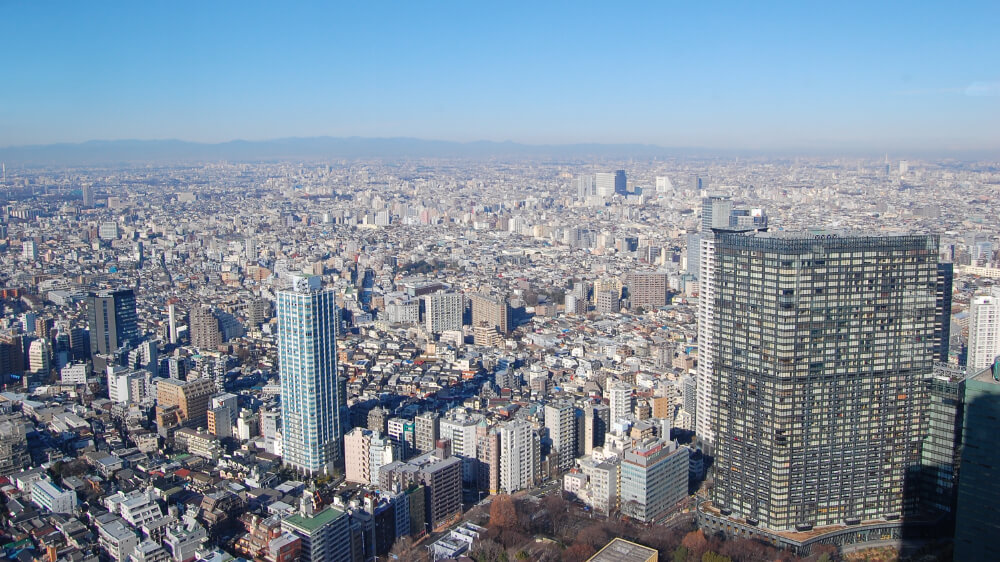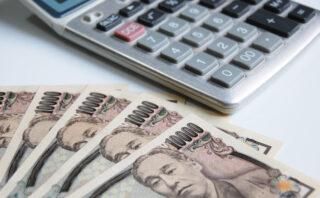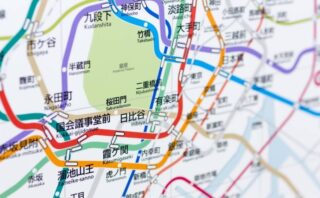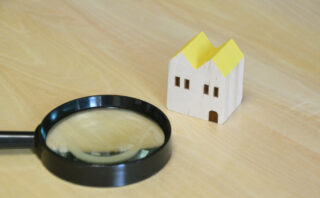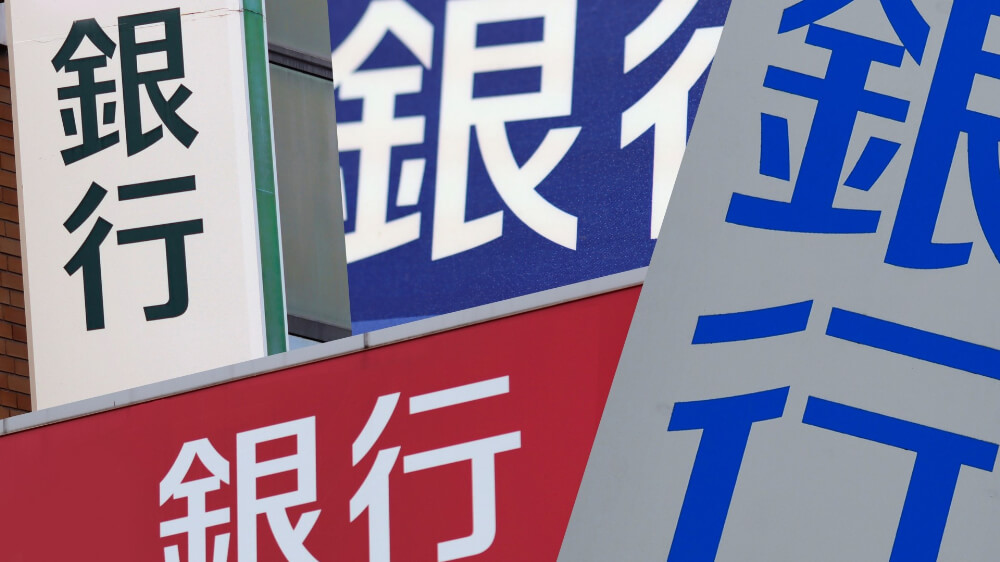Tokyo is one of the world’s leading metropolises, and its complex layout might be a bit confusing for foreigners. However, knowing which areas are best for living in Tokyo is crucial for anyone considering residing there. Here, we introduce the optimal neighborhoods for living in Tokyo and explain their respective features and advantages.
Overview of Neighborhoods in Tokyo
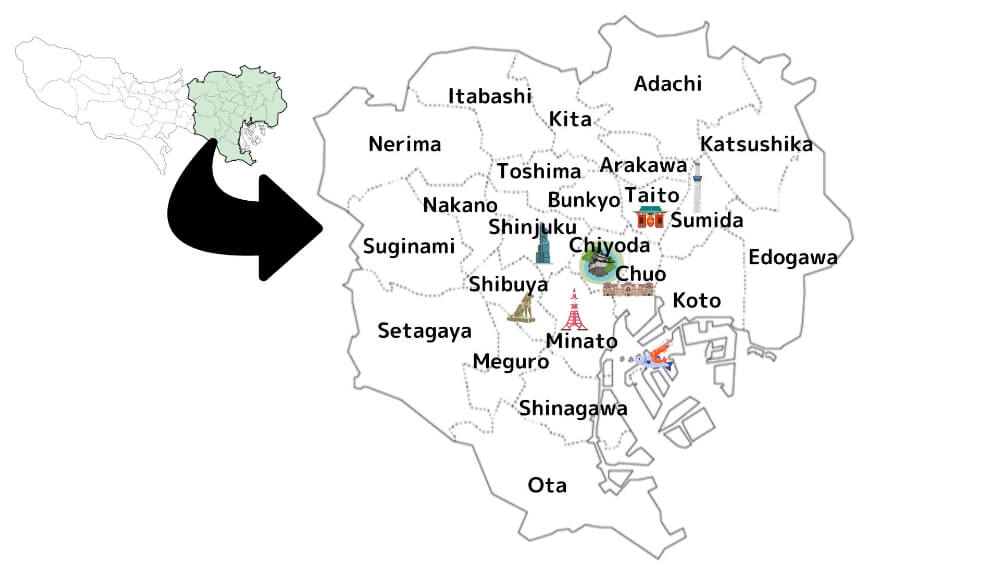
Tokyo consists of the 23 special wards, suburban towns in the west, and several islands in the south. The 23 special wards, centred around Chiyoda Ward where the Imperial Palace is located, can be divided into four areas: north, south, east, and west, each with its own distinct atmosphere and characteristics.
Heart of Tokyo
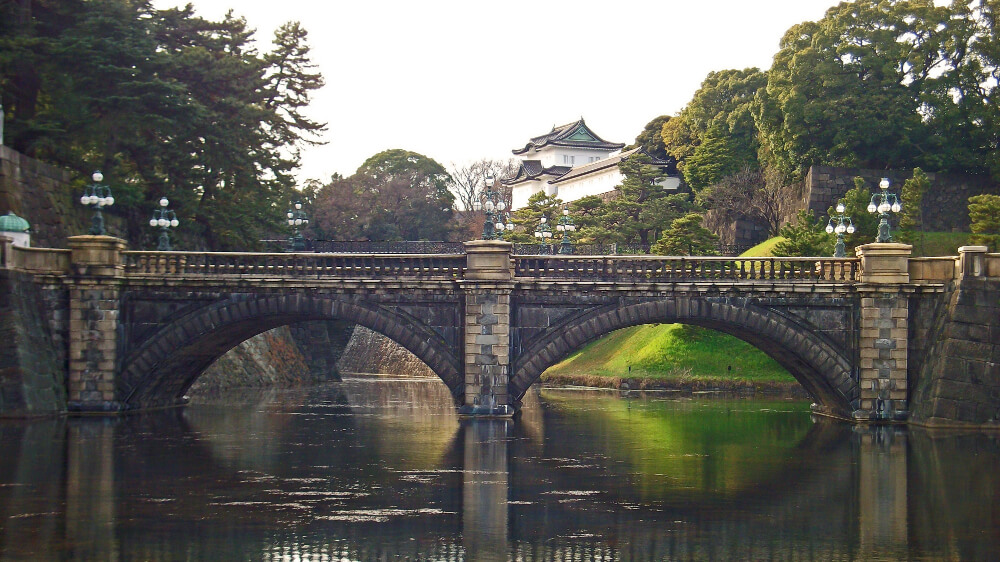
Words included: Chiyoda
Representative stations: Tokyo, Kokkai-gijidō-mae, Akihabara, Ochanomizu, Yuraku-cho
Known as the political centre of Japan, which is home to not only the Imperial Palace but also to the National Parliament Building and the Prime Minister’s Official Residence. Additionally, areas like Marunouchi and Yurakucho on the eastern side of Chiyoda Ward boast some of the most important business districts in Tokyo. Part of Tokyo Station is located in Chiyoda Ward, recognised as a crucial transportation hub. However, residential areas are quite limited.
Eastern Area

Words included: Taito, Sumida, Koto, Katsushika, Edogawa
Representative stations: Asakusa, Ueno, Oshiage, Monzen-nakacho, Toyosu
This area retain the charm of old downtown culture and historical streetscapes, offering interesting glimpses into traditional Japanese culture dating back to the Edo period. With good access to the city centre and well-developed living infrastructure, they offer comfortable areas to live in. Except for central wards like Chuo and Taito, the cost of living is relatively reasonable, providing a living environment that blends historical charm with convenience.
Southern Area
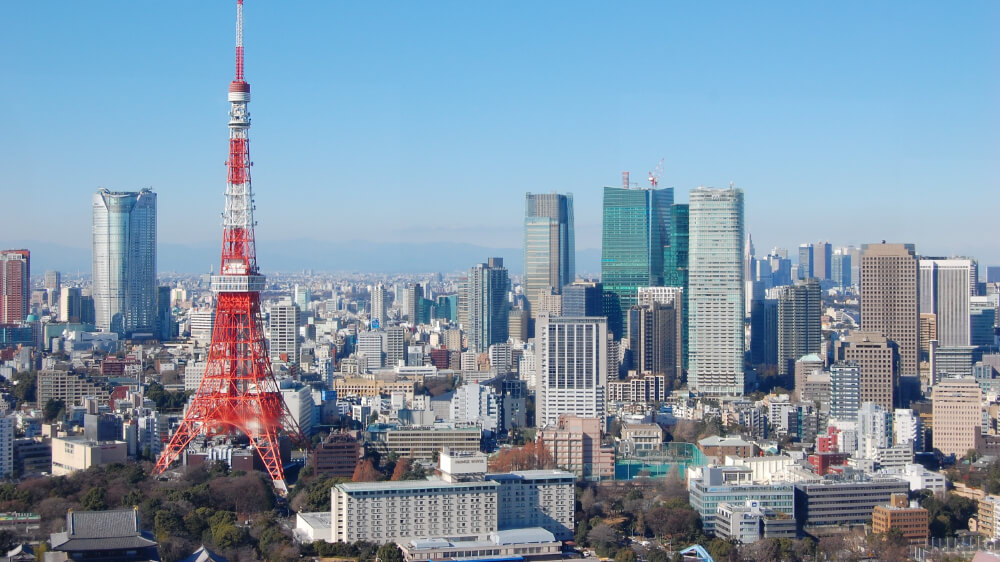
Words included: Minato, Meguro, Ota, Shinagawa
Representative stations: Roppongi, Hiroo, Meguro, Shinagawa, Omotesando
This area boasts tourist attractions such as Tokyo Tower and Roppongi Hills, making it a vibrant and cosmopolitan region. Known as one of the upscale residential areas within Tokyo, it’s dotted with fashionable cafes and restaurants. Its proximity to Haneda Airport, which is accessible within 30 minutes, is another notable feature.
Western Area
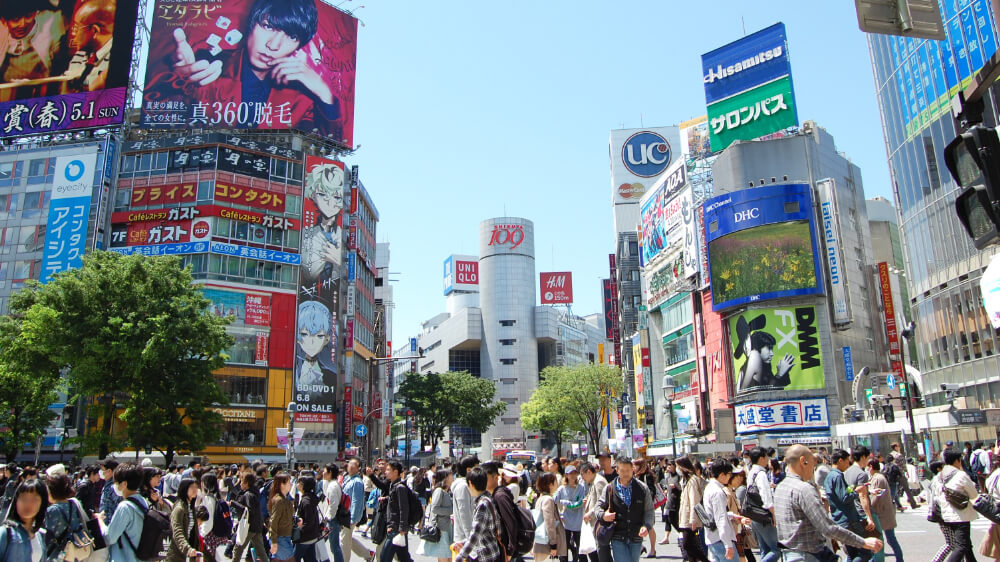
Words included: Shinjuku, Nakano, Shibuya, Suginami, Nerima, Setagaya Wards
Representative stations: Shinjuku, Shibuya, Nakano, Koenji, Sangenjaya
Shinjuku and Shibuya are energetic areas known as commercial hubs where innovative cultures emerge one after another. While rents are relatively high and residential areas are limited, these areas attract a relatively large population of young people and expatriates. Suginami and Nakano are also interesting areas known for their unique subcultures and street culture. On the other hand, Nerima and Setagaya are relatively calm residential areas suitable for families.
Northern Area
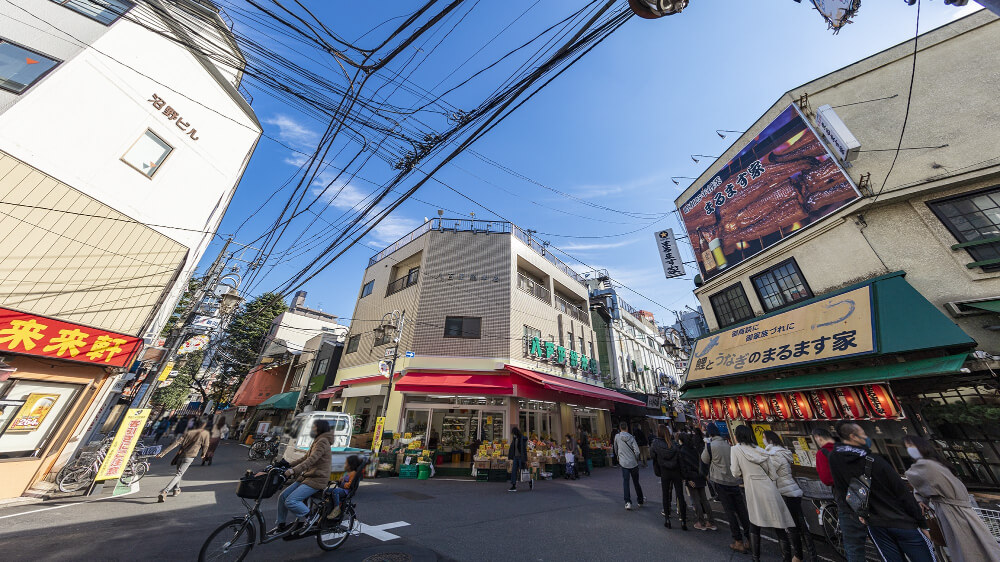
Words included: Itabashi, Kita, Toshima, Bunkyo, Arakawa, Adachi Wards
Representative stations: Ikebukuro, Kitasenju, Akabane, Nishi-Nippori, Kasuga
These areas offer a peaceful and historical atmosphere slightly away from the city centre, attracting those seeking a quieter living environment. With well-equipped schools, medical facilities, and commercial establishments, they provide an environment conducive to raising children. Despite being more affordable in terms of the cost of living compared to the city centre, they offer relatively good mobility to major cities in Tokyo.
Factors to Consider

Cost of Living
Rent in Tokyo varies greatly depending on the location. Central areas like Chiyoda, Chuo, and Minato wards can cost around ¥120,000 to ¥150,000 per month even for small studio apartments. Commercial areas like Shinjuku and Shibuya also rank high in terms of rent.
Generally, the farther away from Chiyoda Ward, the greater the chance of finding more affordable properties. In areas like the northern wards (excluding Toshima and Bunkyo), Edogawa, and Katsushika, one might find small studios for around ¥70,000 per month.
Mobility
Accessibility to stations and the convenience of train lines are important factors when choosing a place to live. It’s recommended to live near stations that provide direct access to workplaces or schools without transfers. While JR and Tokyo Metro are the main transportation networks in Tokyo, combining different operators may result in higher transportation costs.
Convenience of Daily Life
The availability of facilities such as shopping centres, supermarkets, parks, and medical institutions is another important consideration when choosing a neighborhood. For families with children, living near schools or daycare centres is also crucial. While some commercial districts may have many restaurants and boutiques, they may not be ideal places for living.
Safety
Tokyo is generally a safe city, where it’s possible for women to walk alone even late at night. However, the safety level may vary depending on the area. It’s advisable to avoid red-light districts with many adult entertainment venues, such as kyabakura or fūzoku.
Lifestyle
It’s essential to choose an area that suits individual preferences and lifestyles, whether one prefers a quiet residential neighborhood or an area with vibrant shopping and nightlife. While commercial areas like Shinjuku and Shibuya offer abundant dining and shopping options, factors such as the scarcity of reasonably priced supermarkets and schools as well as noise during the nights should also be considered.
Living Environment for Expats
Tokyo is the most diverse prefecture in Japan, but there are many areas where opportunities to encounter foreigners are limited. Conversely, in Minato Ward, where many expats reside, it’s easy to find communities, and administrative support in foreign languages as well as services at restaurants and shops are available in English.
The nationality of the foreigners living in each area also has its own characteristics. For example, Toshima Ward has a Chinese community, Shin-Okubo in Shinjuku Ward is home to Koreans, Minato Ward has many European and American residence, and Edogawa Ward has an Indian community.
Best Places to Live in Tokyo
Popular Areas Among Expats
There are several wards in Tokyo popular among foreign residents, including Shinjuku, Toshima, Taito, and Minato. It might be possible to live in these areas without speaking Japanese, but it tends to come with a higher cost of living.
Kagurazaka, Iidabashi (Shinjuku Ward)
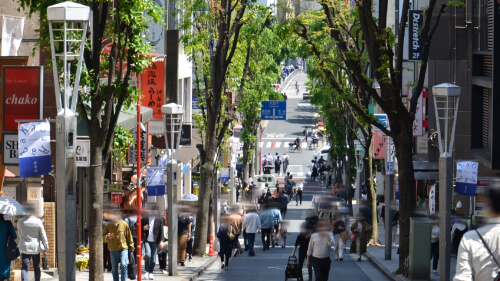
With a long history of French language schools, these areas have a significant number of Westerners, forming a French quarter. Alongside French establishments, there are restaurants and shops from all over the world, offering an multicultural experience while living in Tokyo.
| Cost of living | Very High |
| Mobility | Very good |
| Convenience of living | Good |
| Safety | Very good |
| Suitable for | Families |
| Atmosphere | International, quaint, lively |
Hiroo (Minato Ward)
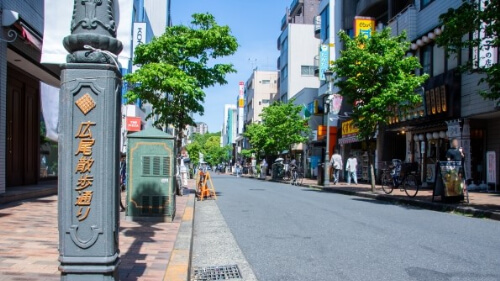
This area is known for hosting various embassies, making it a high-end residential area with a high percentage of foreigners and upper class people. Despite being relatively close to the city centre, it has a calm atmosphere and good safety.
| Cost of living | Very High |
| Mobility | Good |
| Convenience of living | Good |
| Safety | Very good |
| Suitable for | Families |
| Atmosphere | Sophisticated, luxury, calm |
Yoyogi, Shibuya (Shibuya Ward)
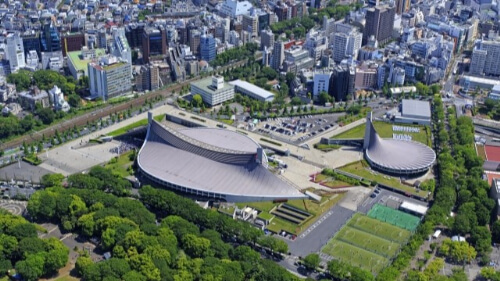
Loved and chosen by foreigners regardless of nationality. It stands out for its abundant shopping and dining options, offering an exciting lifestyle. Another great point is that Yoyogi Park, which is quite large for a park in central Tokyo, is located here.
| Cost of living | Very High |
| Mobility | Very good |
| Convenience of living | Fairly good |
| Safety | Fairly good |
| Suitable for | Anyone |
| Atmosphere | Lively, energetic, youthful |
Azabu Juban, Roppongi (Minato Ward)
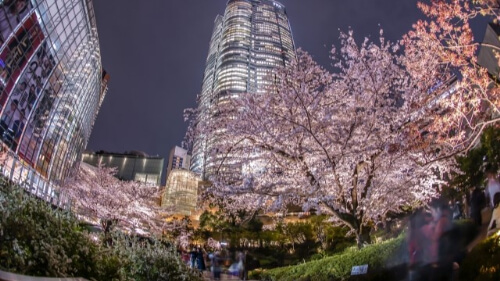
Roppongi is known for a vibrant nightlife scene with many bars, and clubs, making it particularly popular among expats who enjoy nightlife. As you head towards Azabu Juban, there is an increase in the number of luxury residential areas, and the atmosphere becomes slightly more subdued.
| Cost of living | Very High |
| Mobility | Good |
| Convenience of living | Good |
| Safety | Fairly good |
| Suitable for | Singles, couples |
| Atmosphere | Lively, energetic, international |
Meguro, Nakameguro (Meguro Ward)
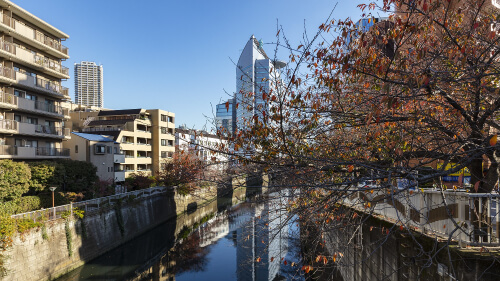
Close to upscale residential areas such as Shirokane and Takanawa. These areas strike a balance between a serene atmosphere and trendy cafes and shops. With relatively abundant greenery, it offers a comfortable environment for everyone.
| Cost of living | High |
| Mobility | Very good |
| Convenience of living | Very good |
| Safety | Good |
| Suitable for | Anyone |
| Atmosphere | Lively, fashionable, relaxed |
Popular Residential Areas Among Japanese
The areas mentioned in the previous chapter are also favored by the Japanese people, but due to their high cost of living, they are not often chosen by Japanese residents unless they have high incomes. Here are some residential areas popular among many Japanese for their excellent mobility and convenience. If you are comfortable without a foreign community, there are plenty of places where you can live and be satisfied with the cost of living.
Koenji, Ogikubo (Suginami Ward)
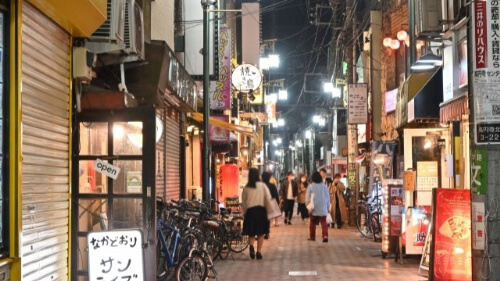
Particularly favored by students and young singles, this area hs many cheap izakayas and unique independently-owned shops where you can enjoy yourself while keeping living expenses low. It’s just about a 10-minute ride to Shinjuku.
| Cost of living | Moderate |
| Mobility | Good |
| Convenience of living | Very good |
| Safety | Good |
| Suitable for | Singles, couples |
| Atmosphere | Unique, vibrant, laid back |
Oshiage (Sumida Ward)

Famous for Skytree, Oshiage not only has commercial facilities but also abundant in nature, with parks and rivers, making it suitable for families. It offers direct access to both Haneda and Narita airports, and the popular tourist destination of Asakusa is also nearby.
| Cost of living | Moderate |
| Mobility | Good |
| Convenience of living | Very good |
| Safety | Very good |
| Suitable for | Family |
| Atmosphere | Touristy, peaceful, lively |
Toyosu (Koto Ward)
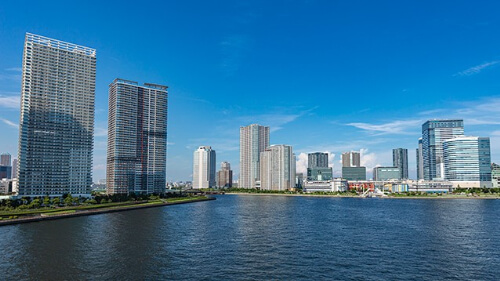
This waterfront area has been undergoing significant redevelopment in recent years. With the construction of high-rise apartments and commercial facilities, it has become a popular residential area, particularly among affluent young people. It’s an area expected to see further development in the future.
| Cost of living | Fairly high |
| Mobility | Fairly good |
| Convenience of living | Very good |
| Safety | Very good |
| Suitable for | Family |
| Atmosphere | Lively, modern, peaceful |
Sangenjaya (Setagaya Ward)
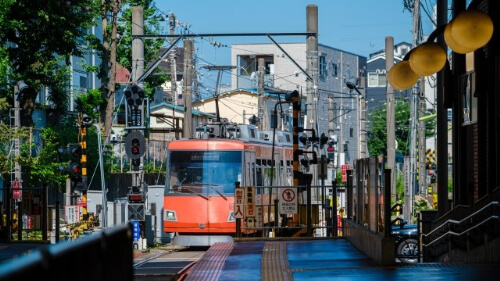
A regular in the “most desired neighborhoods to live in” rankings. It’s popular among young people for its trendy shops and easy access to Shibuya, just two stops away. It’s also famous for its many bars, making it a popular nightlife spot.
| Cost of living | Fairly high |
| Mobility | Good |
| Convenience of living | Very good |
| Safety | Good |
| Suitable for | Anyone |
| Atmosphere | Trendy, vibrant, quaint |
Futakotamagawa (Setagaya Ward)

The town is well-maintained with plenty of commercial facilities. There are also many places where you can enjoy nature such as parks and rivers, making it especially recommended for families. It’s about a 30-minute distance from the city centre which helps keep living expenses in check.
| Cost of living | Moderate |
| Mobility | Fairly good |
| Convenience of living | Very good |
| Safety | Very good |
| Suitable for | Family |
| Atmosphere | Refined, relaxed, peaceful |
Kichijoji (Musashino City)
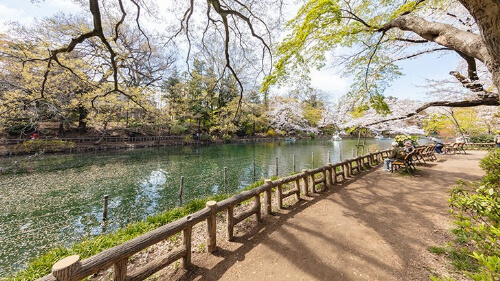
Although situated outside the 23 special wards, it is extremely popular with people of all ages and genders. It features a spacious park and provides convenient shopping options, along with easy access to the city centre. Due to its popularity, rents are relatively higher than in surrounding areas.
| Cost of living | Moderate |
| Mobility | Good |
| Convenience of living | Good |
| Safety | Good |
| Suitable for | Singles, couples |
| Atmosphere | Lively, laid back, cultural |
Nakano (Nakano Ward)
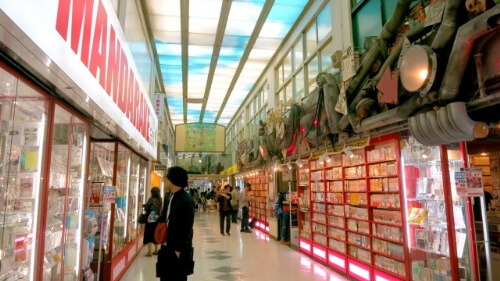
Known for its developed subculture scene, attracting artists and otakus. It’s a convenient place for living that there are administrative institutions and plenty of commercial facilities as well as excellent access to the city centre, just 5 minutes away from Shinjuku. It’s a very balanced residential area.
| Cost of living | Moderate |
| Mobility | Very good |
| Convenience of living | Very good |
| Safety | Good |
| Suitable for | Anyone |
| Atmosphere | Unpretentious, lively, relaxed |
Kitasenju (Adachi Ward)
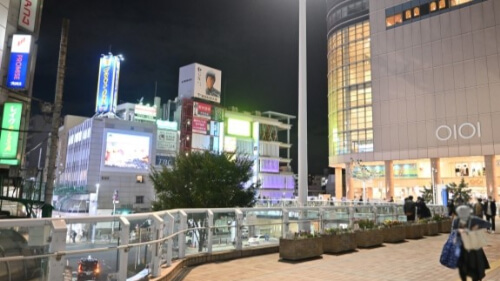
Formerly lacking security, it has rapidly evolved into a clean and comfortable town. Accessible via five train lines, it offers convenience to various Tokyo destinations with ample dining and shopping options, making it a neighborhood of exceptional value.
| Cost of living | Fairly low |
| Mobility | Good |
| Convenience of living | Very good |
| Safety | Fairly good |
| Suitable for | Anyone |
| Atmosphere | Vibrant, unpretentious, rustic |
Tokyo offers a variety of residential neighborhoods, each with its own unique characteristics. Additionally, there are differences between areas preferred by foreign expatriates and those preferred by Japanese residents. Use this article to help you find a place to live that suits your preferences and lifestyle!
Also note that foreigners should take into account not only residential areas but also differences in contract methods, Japanese customs, agencies providing language support, etc, when looking for a place to live in Japan.
